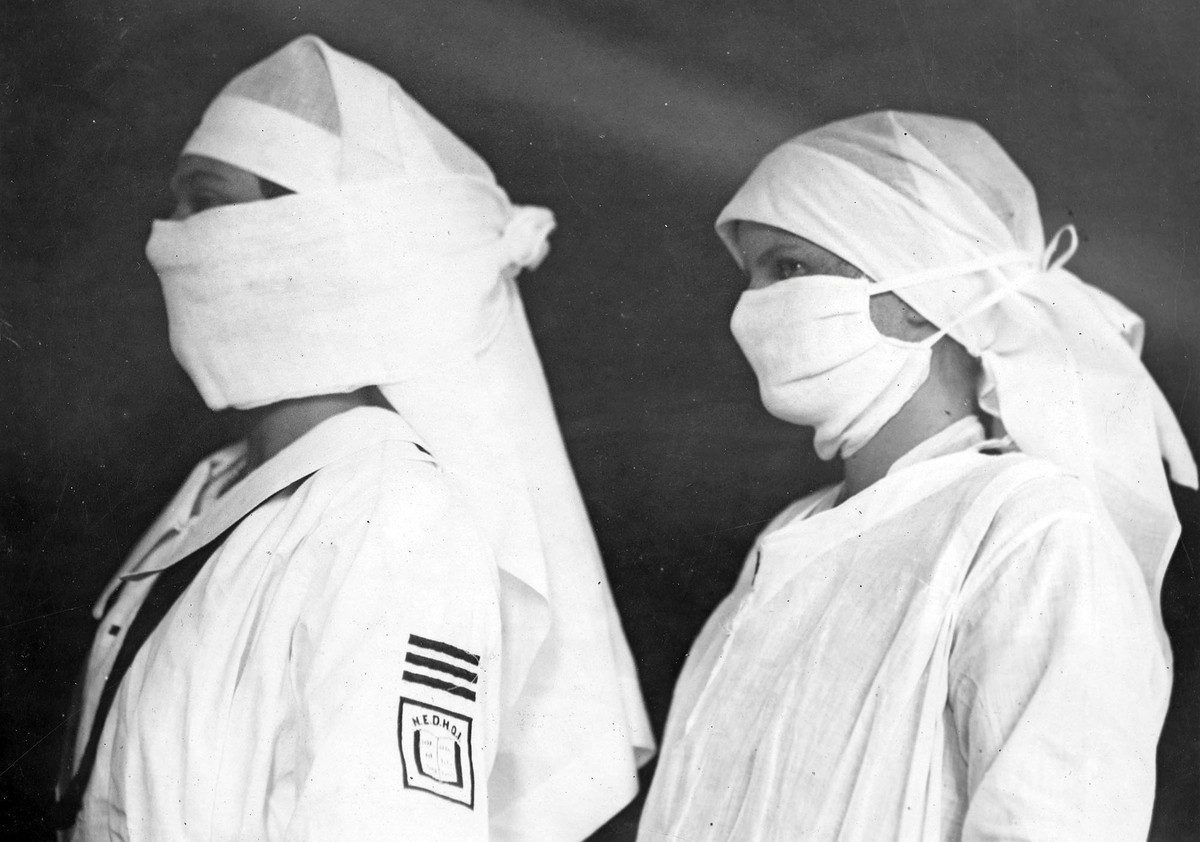
Nurses in Boston wearing masks to contain influenza in the spring of 1919.
Hope springs in the fight to beat flu. An injection to fight COVID-19 is on its way. US President Joe Biden advocates the wearing of face masks, even if not compulsory for those not medical exempt.
And we’ve been her before. In 1918, influenza, the so-called Spanish Flu, or 91918H1N1, to give its proper name, claimed the lives of more than 50 million people in just 15 months. Some estimates out the toll at 100 million. It was the worst pandemic of them all. Britain’s Daily Mirror newspaper reported that 65 soldiers had to be buried at sea from just one troopship before it arrived at Southampton. The global economy decreased by about 5 per cent.
Sometimes death came terrifyingly quickly with victims turning blue-black and drowning in their own body fluids. There were no influenza vaccines or antibiotics to treat secondary bacterial infections. It wasn’t proved that Influenza was caused by a virus until 1933.
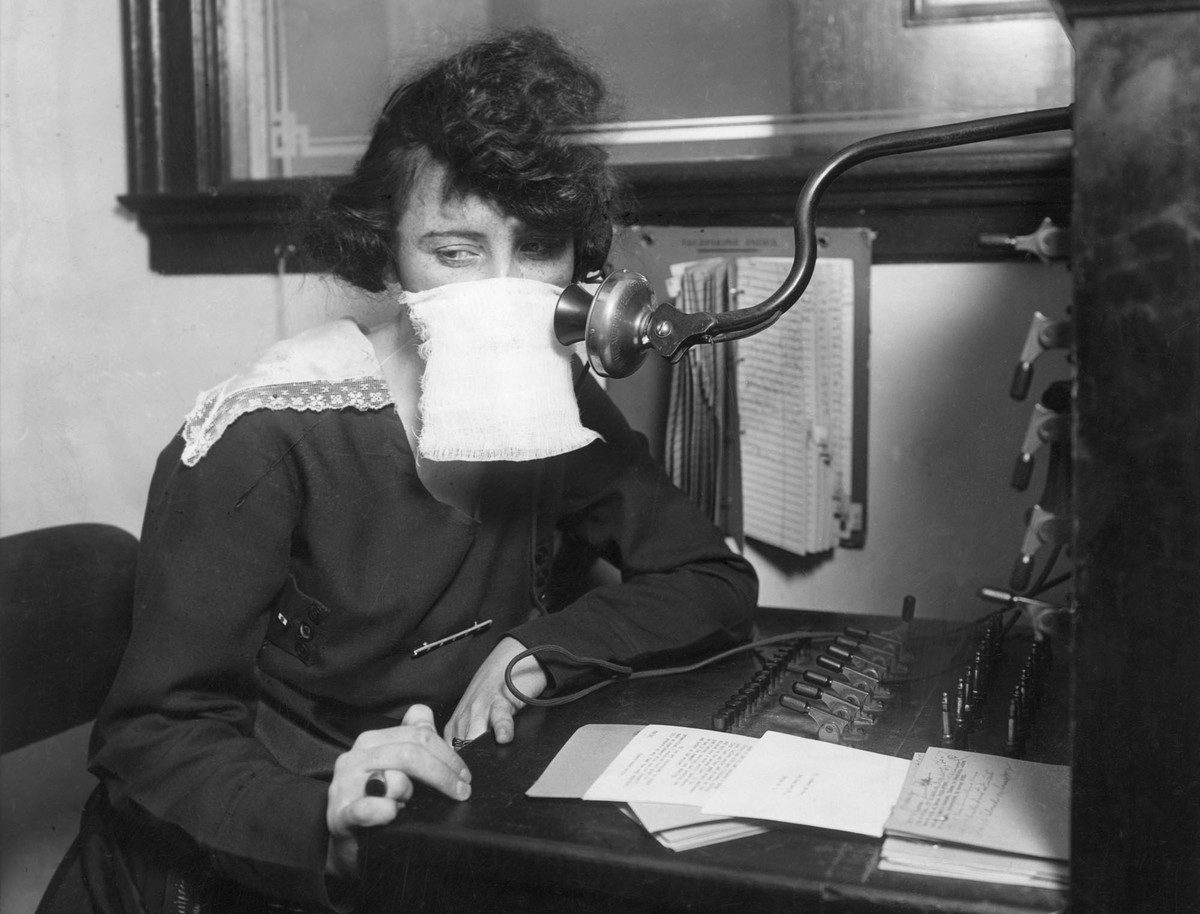
Flu epidemic, 1918: Telephone operator with protective gauze.
As Rob Baker writes:
Historian John Barry, author of “The Great Influenza,” wrote that the US Congress passed a Sedition Act in May 1918, which made it a crime to “wilfully utter, print, write, or publish any disloyal, profane, scurrilous, or abusive language about the form of the Government of the United States.” That meant, whether they wanted to or not, the newspapers had to suppress any reports of the flu epidemic. It also meant, according to Barry, that “against this background, while influenza bled into American life, public health officials, determined to keep morale up, began to lie.” The huge movement of soldiers around the world contributed to the transmission of the H1N1 virus with a speed never before seen.
The British advised “Give up shaking hands for the present and give up kissing for all time”. Posters encouraged Japan’s population to “wear masks, “stay away”; “cover your mouth and nose”; “get vaccinated”; and “gargle”.
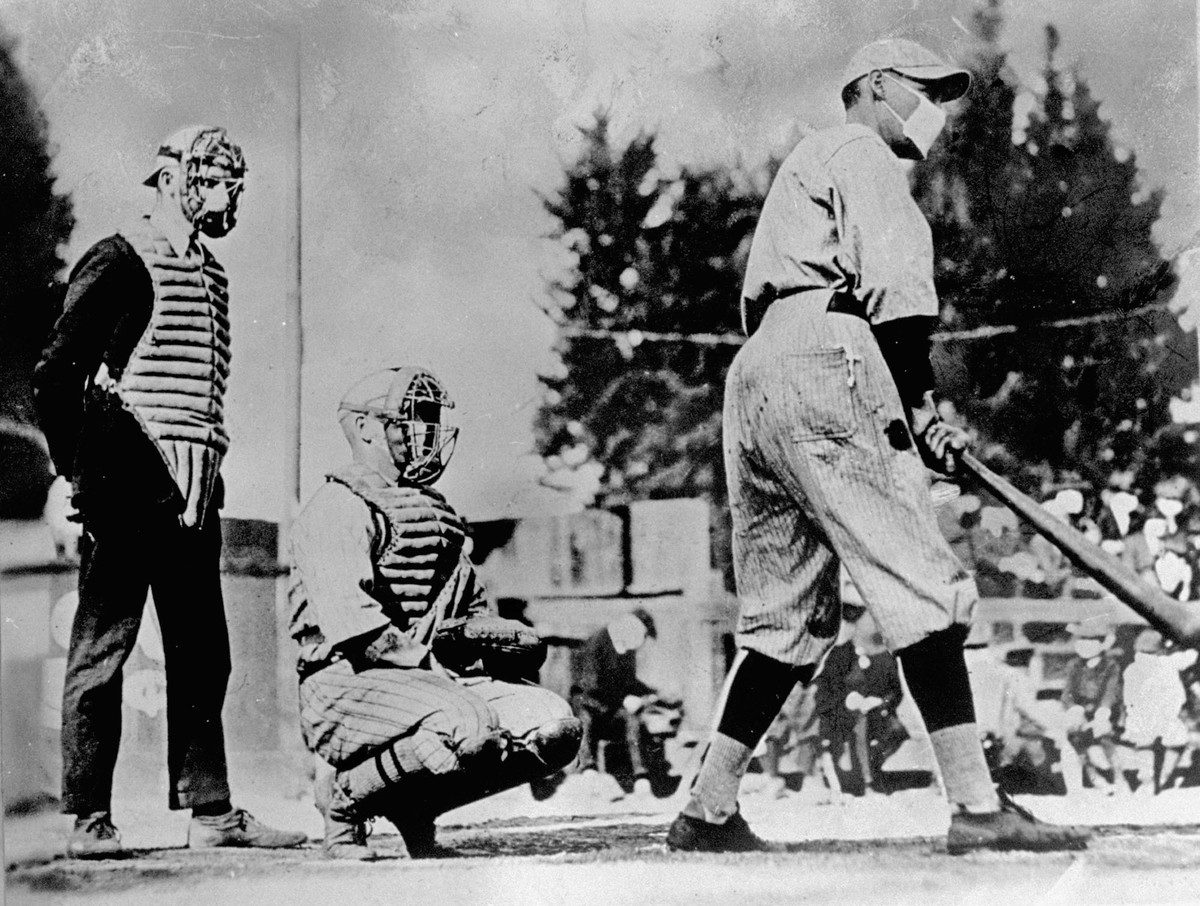
1918: Unident baseball players, one batting & one catching, with umpire standing behind plate, wearing masks which they thought would keep them from getting flu during influenza epidemic of 1918.
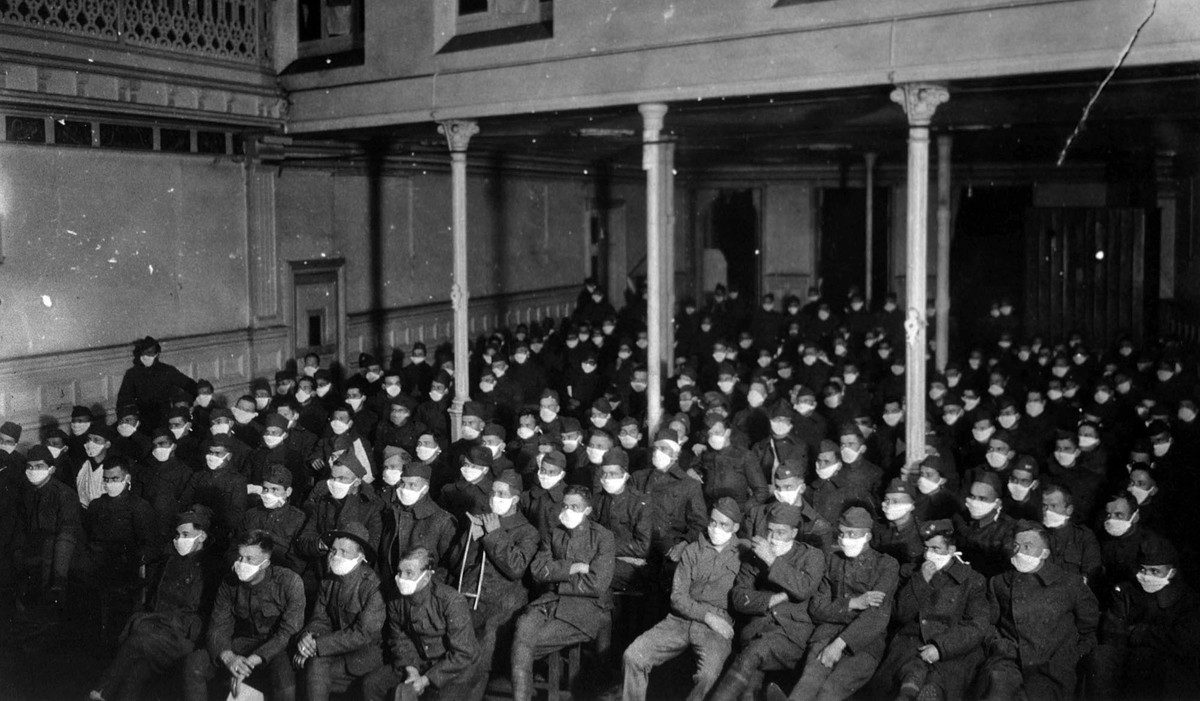
U. S. Army Hospital Number 30, Royat, France: Patients at moving picture show wearing masks because of an influenza epidemic.
“The 1918 has gone: a year momentous as the termination of the most cruel war in the annals of the human race; a year which marked, the end at least for a time, of man’s destruction of man; unfortunately a year in which developed a most fatal infectious disease causing the death of hundreds of thousands of human beings. Medical science for four and one-half years devoted itself to putting men on the firing line and keeping them there. Now it must turn with its whole might to combating the greatest enemy of all–infectious disease”
– The Journal of the American Medical Association, December 1918
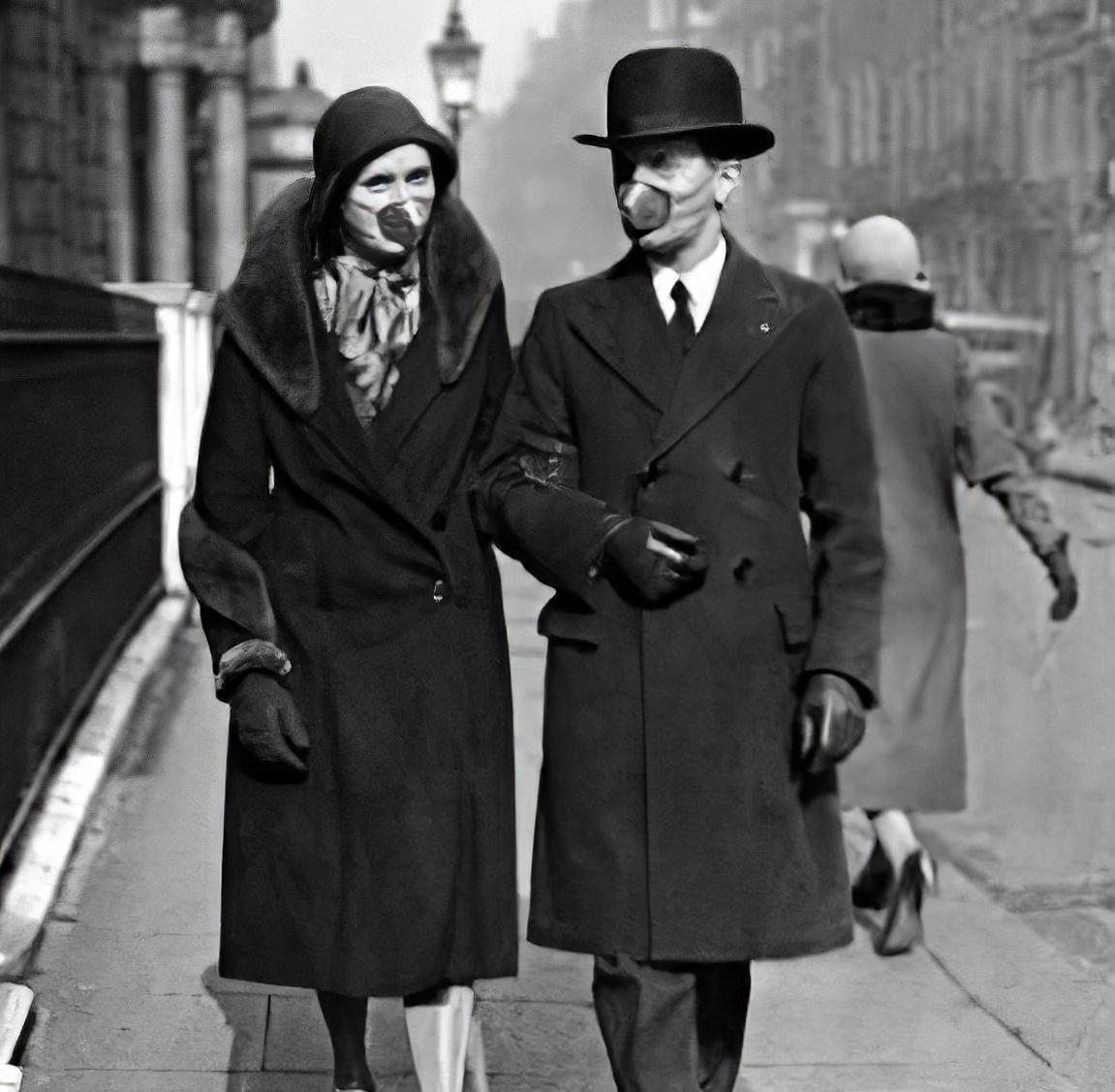
1918-1919 – London. It’s estimated that between 20 per cent and 40 per cent of the entire world’s population became sick.
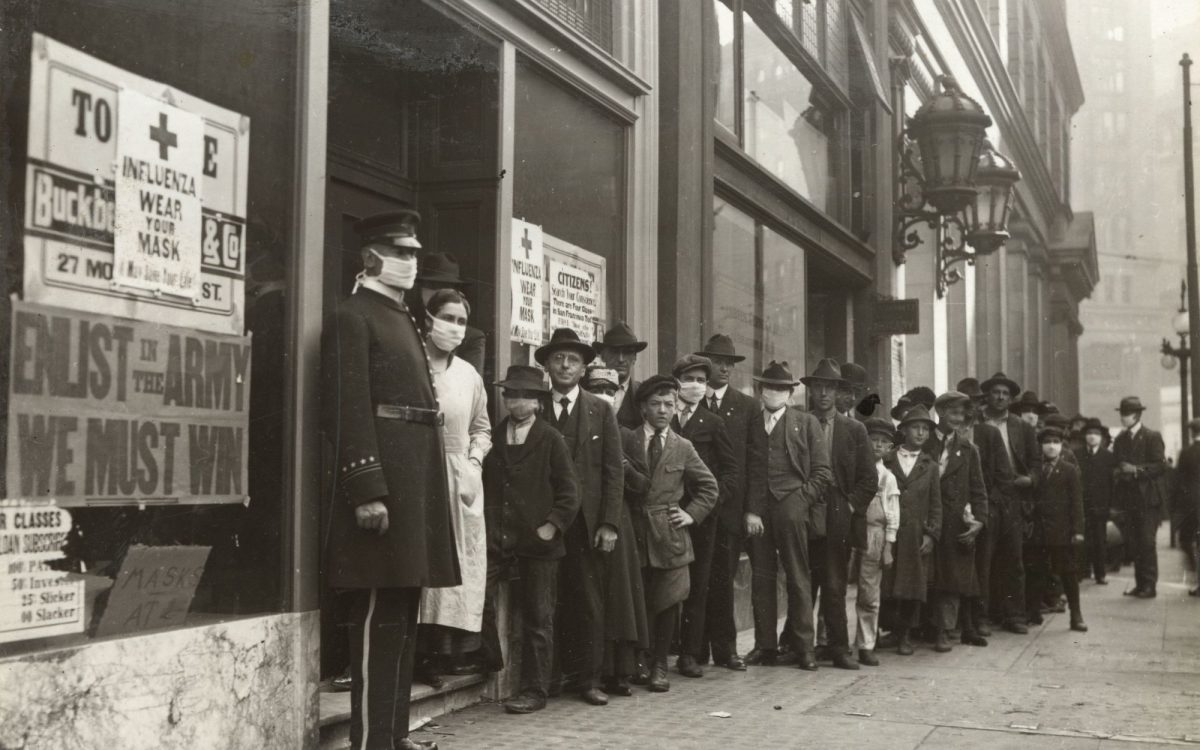
People wait in line to get flu masks on Montgomery Street in San Francisco in 1918. (Hamilton Henry Dobbin)
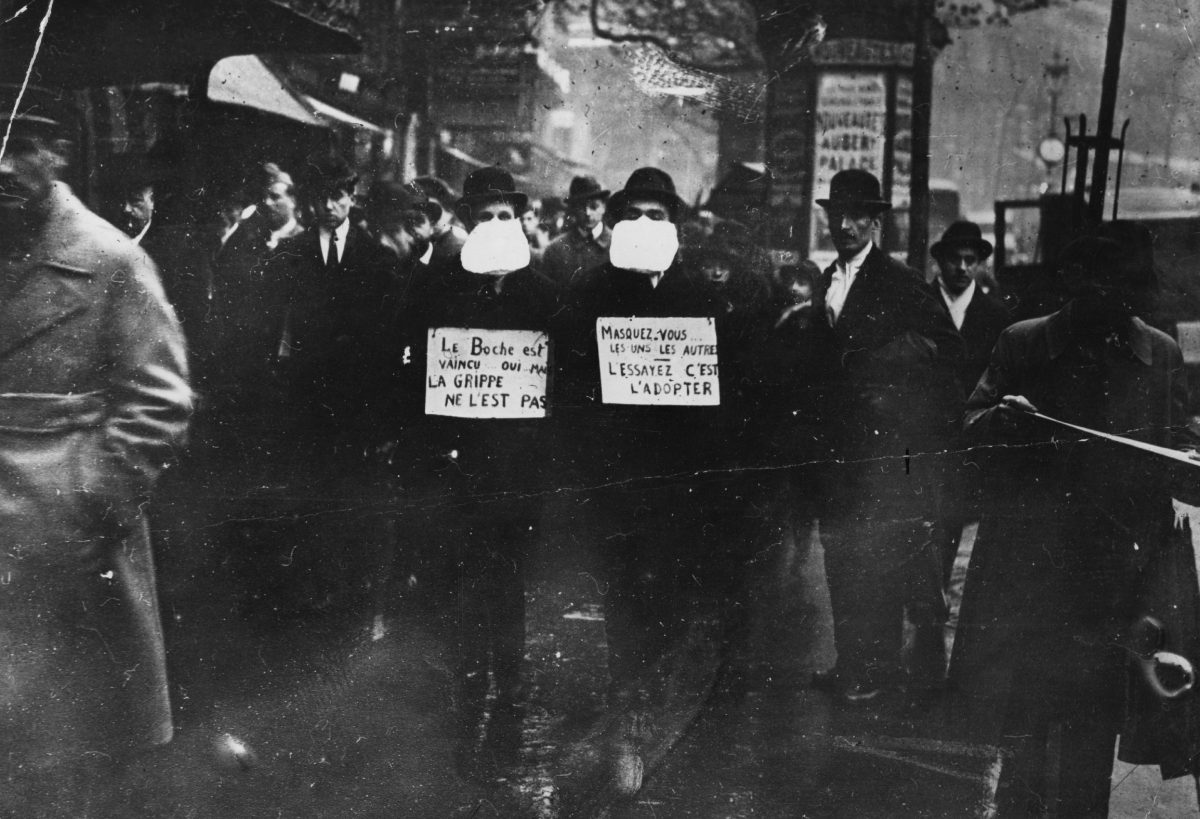
1st March 1919: Two men wearing and advocating the use of flu masks in Paris during the Spanish flu epidemic which followed World War I.
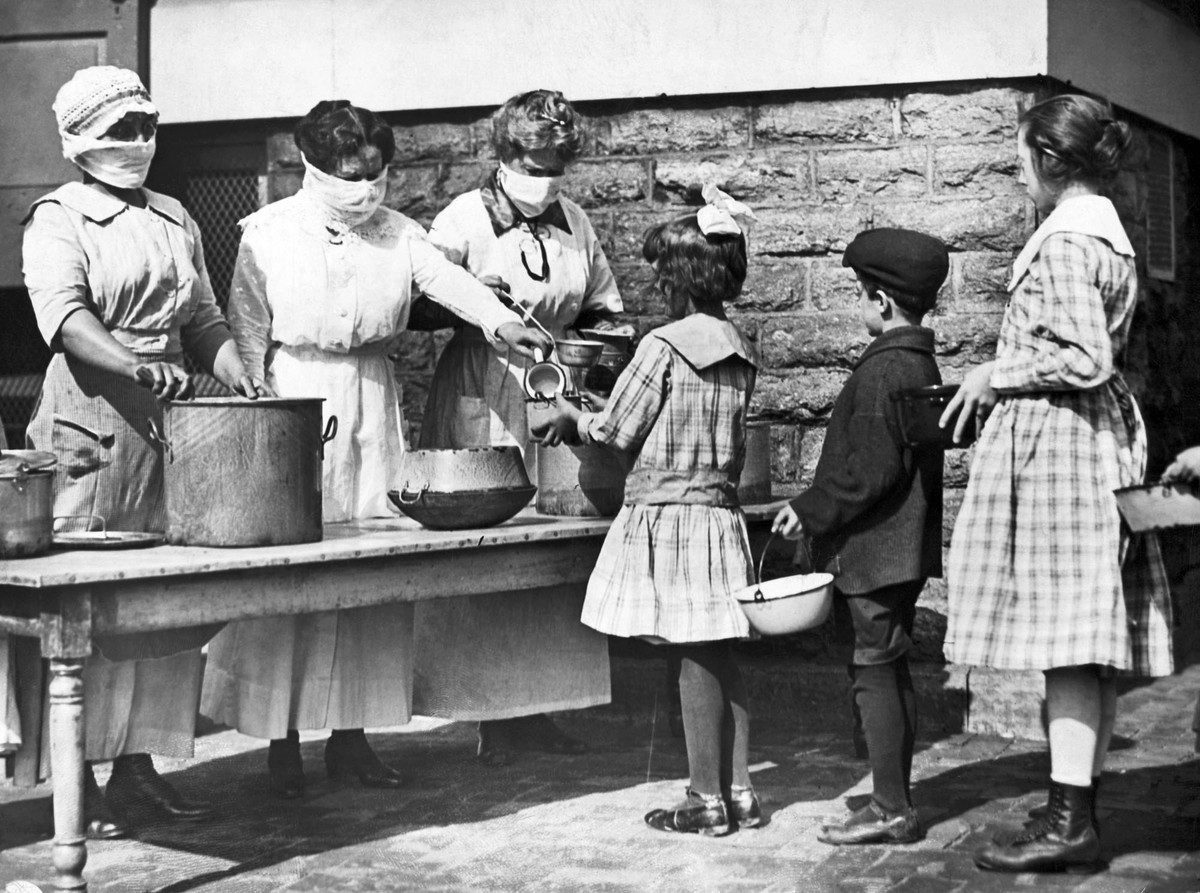
Volunteers wearing masks feed children of stricken families.
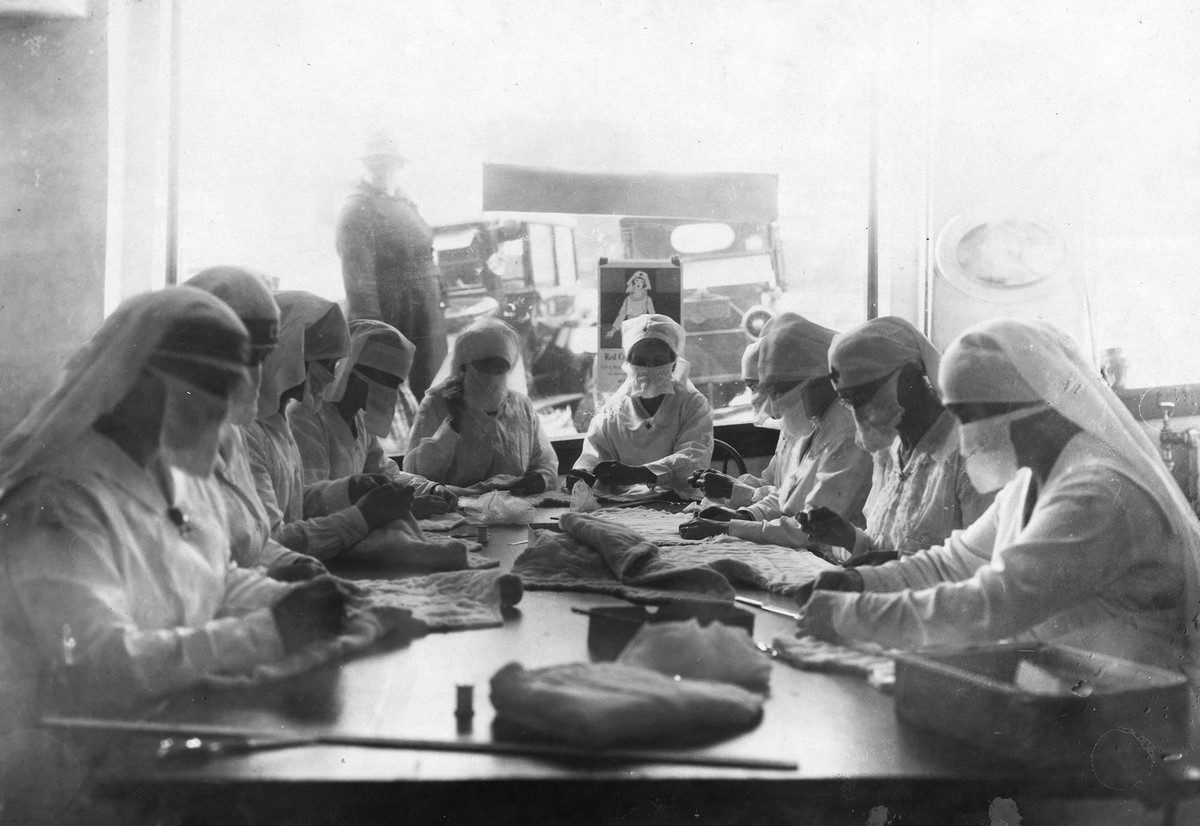
Combatting influenza in Seattle in 1918. At work in the Red Cross rooms in Seattle, Washington, with influenza masks on faces . (National Archives)
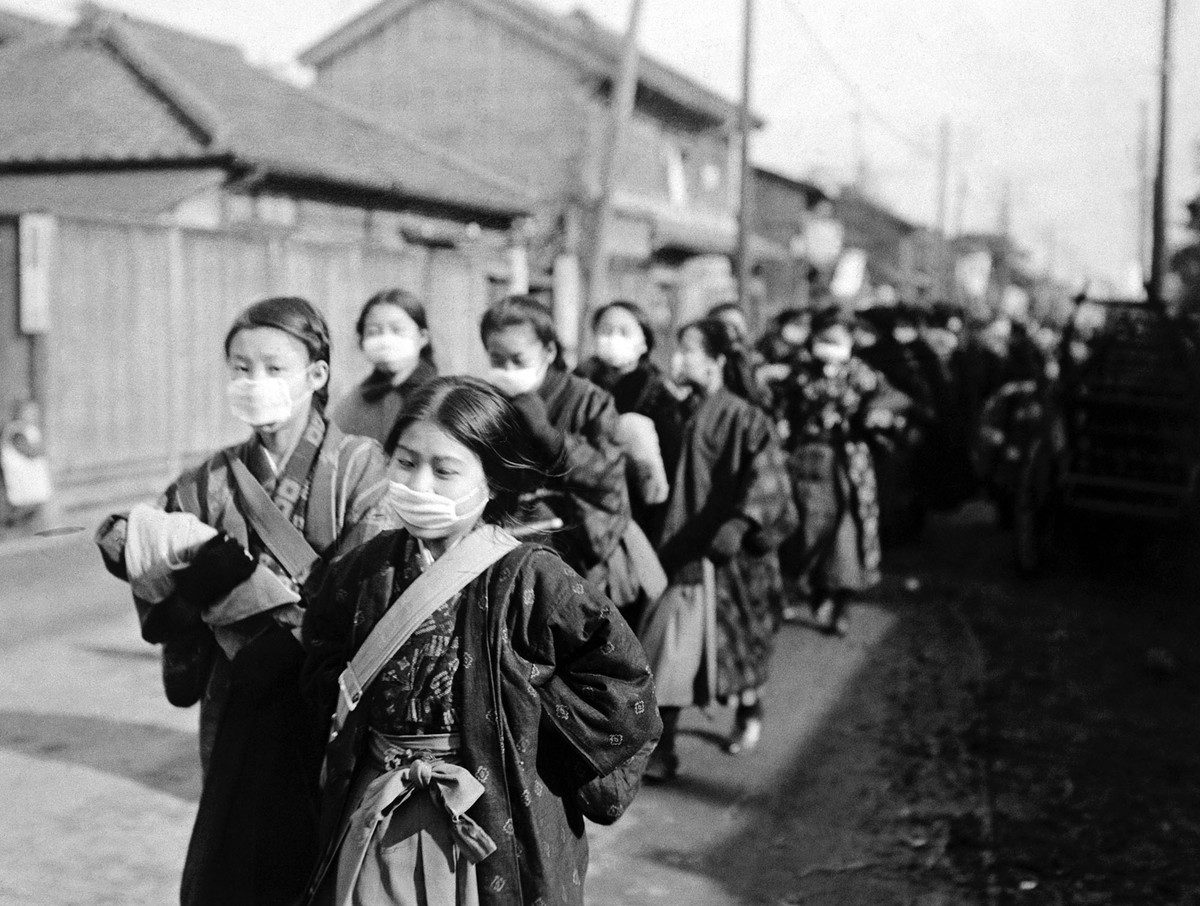
Japanese school girls wear protective masks to guard against the influenza outbreak.
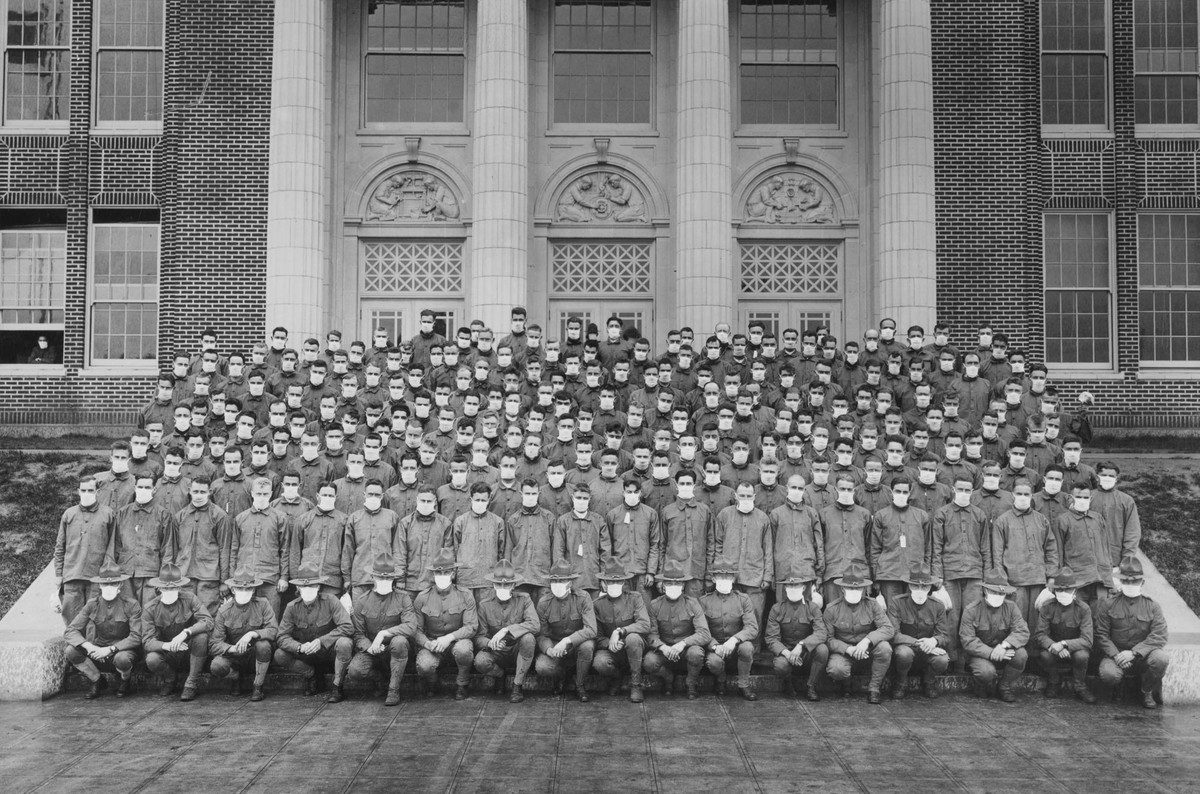
Student Army Training Corps wear influenza masks in Portland, Oregon, on October 27, 1918
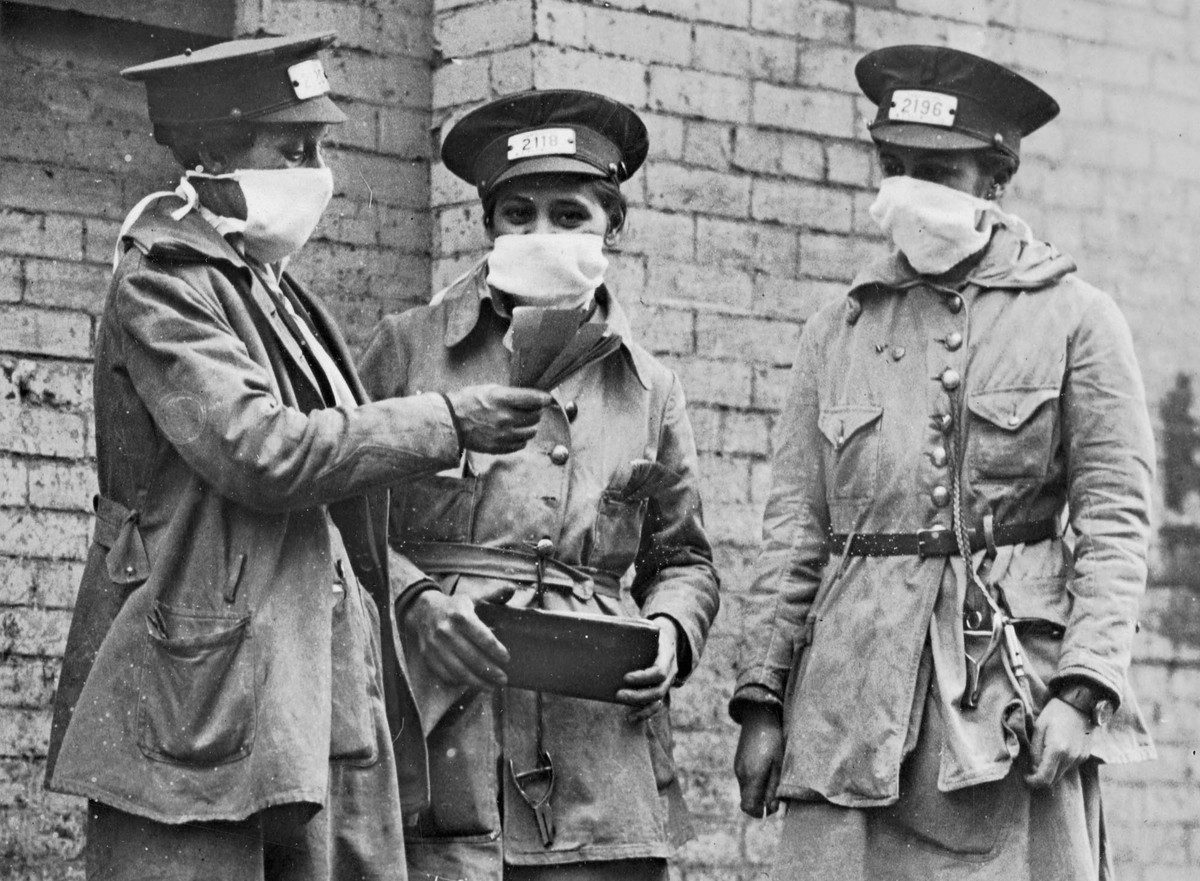
New York City ‘conductorettes’ wear masks, on October 16, 1918

Influenza Epidemic 1918 – Policemen in Seattle, Washington, wearing masks made by the Seattle Chapter of the Red Cross, during the influenza epidemic. (National Archives)

A sailor and a member of the Women’s Motor Corps wear masks while treating influenza patients injured by the explosions of a coal loading plant at Morgan, New Jersey, on October 5, 1918
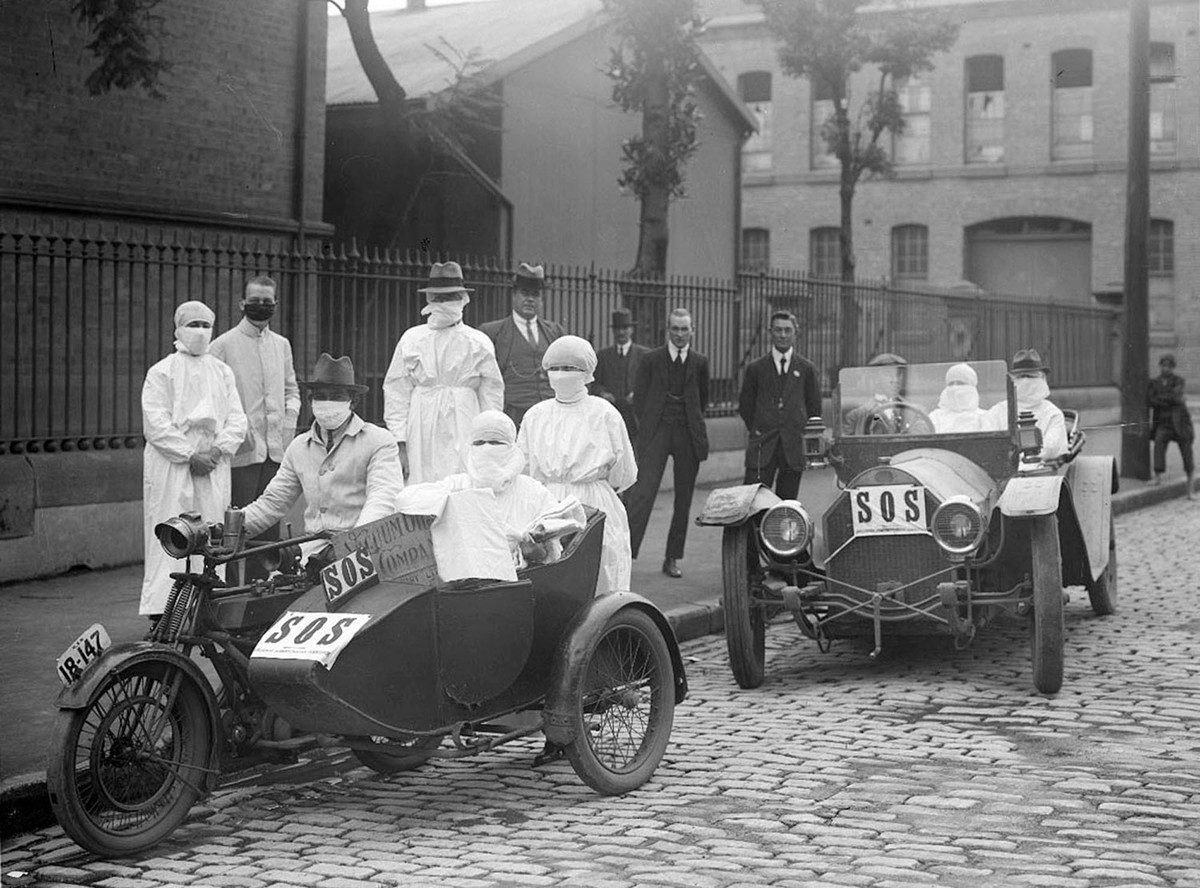
Nurses leaving Blackfriars Depot, Chippnedale NSW, Austalia, during flu epidemic, in April of 1919. (NSW State Archives)
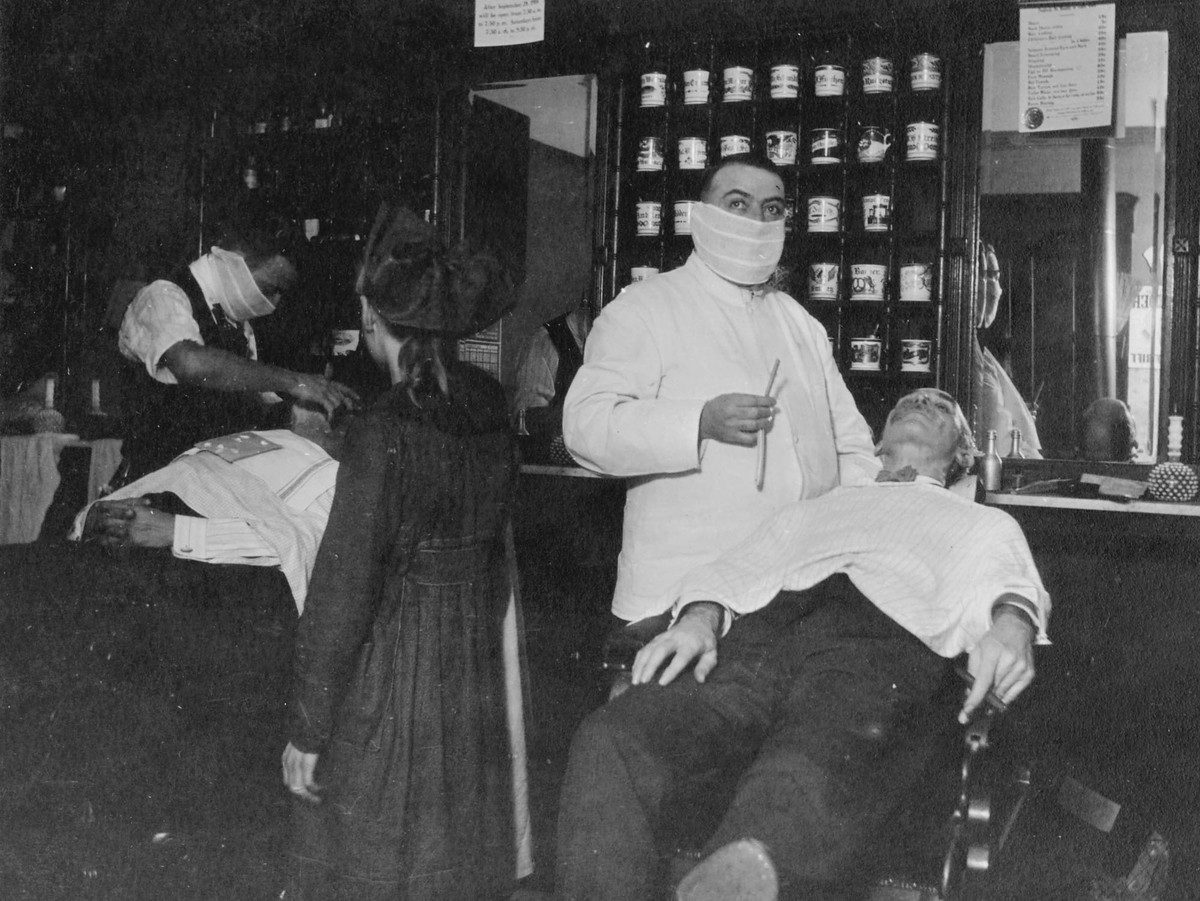
A Cincinnati barbers’ shop
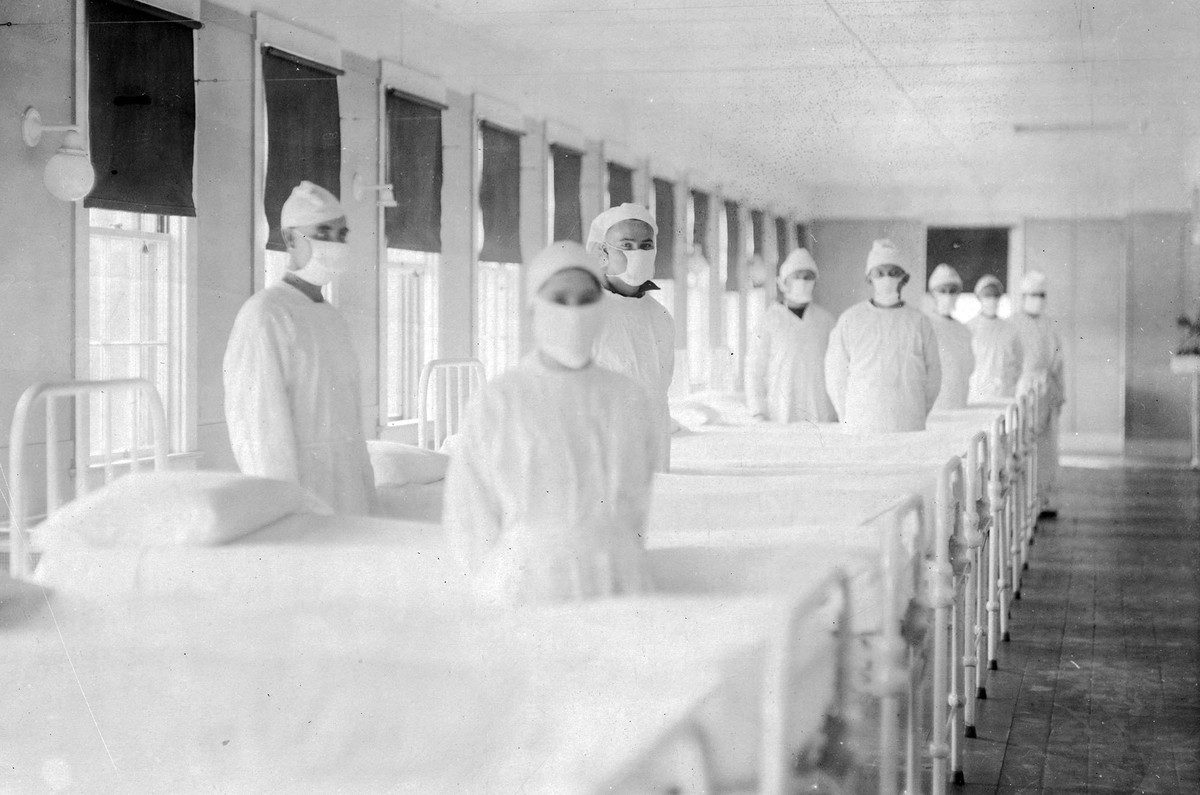
U.S. Naval Hospital. Corpsmen in cap and gown ready to attend patients in influenza ward. Mare Island, California, 12/10/1918. (U.S. Navy)

In this November 1918 photo made available by the Library of Congress, a nurse takes the pulse of a patient in the influenza ward of the Walter Reed hospital in Washington. (Harris & Ewing/Library of Congress via AP)
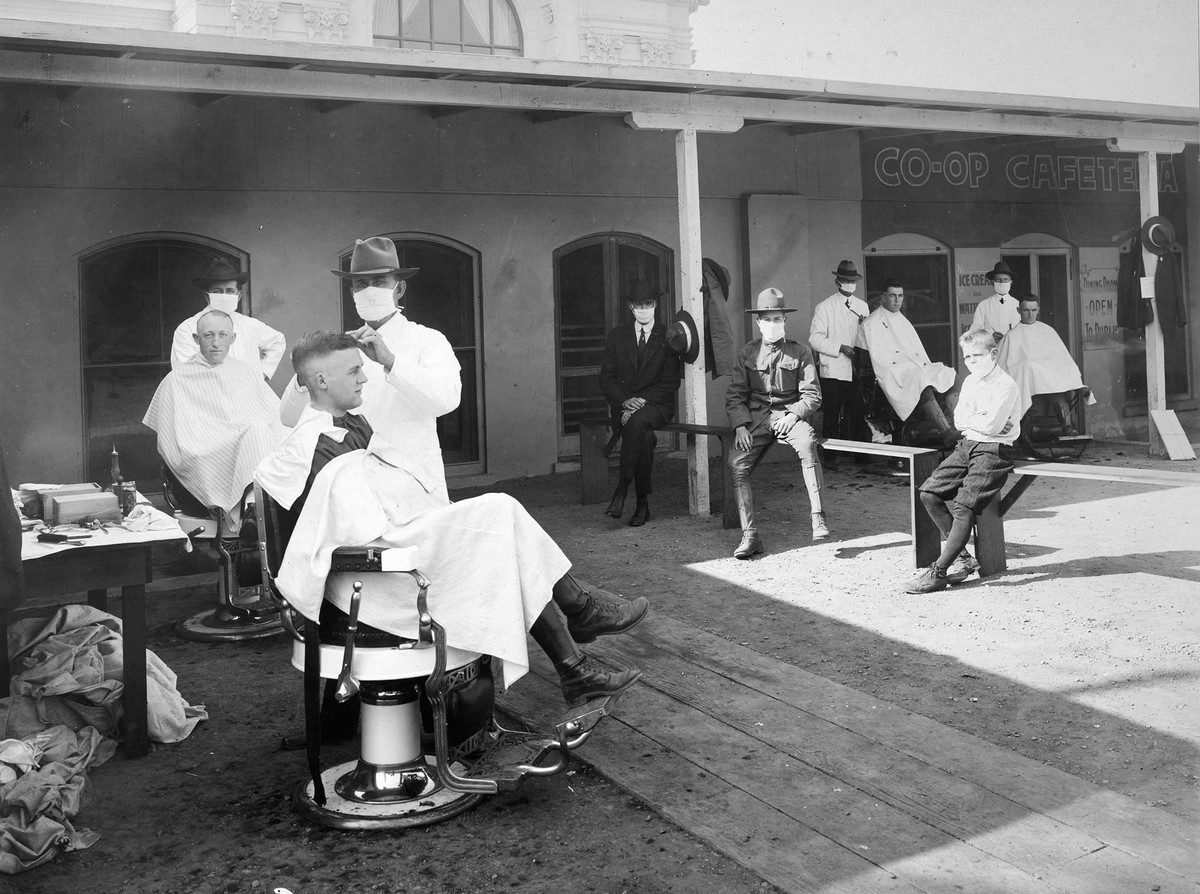
University of California, Berkeley, California, 1919. Open air barber shop during influenza epidemic. (National Archives)
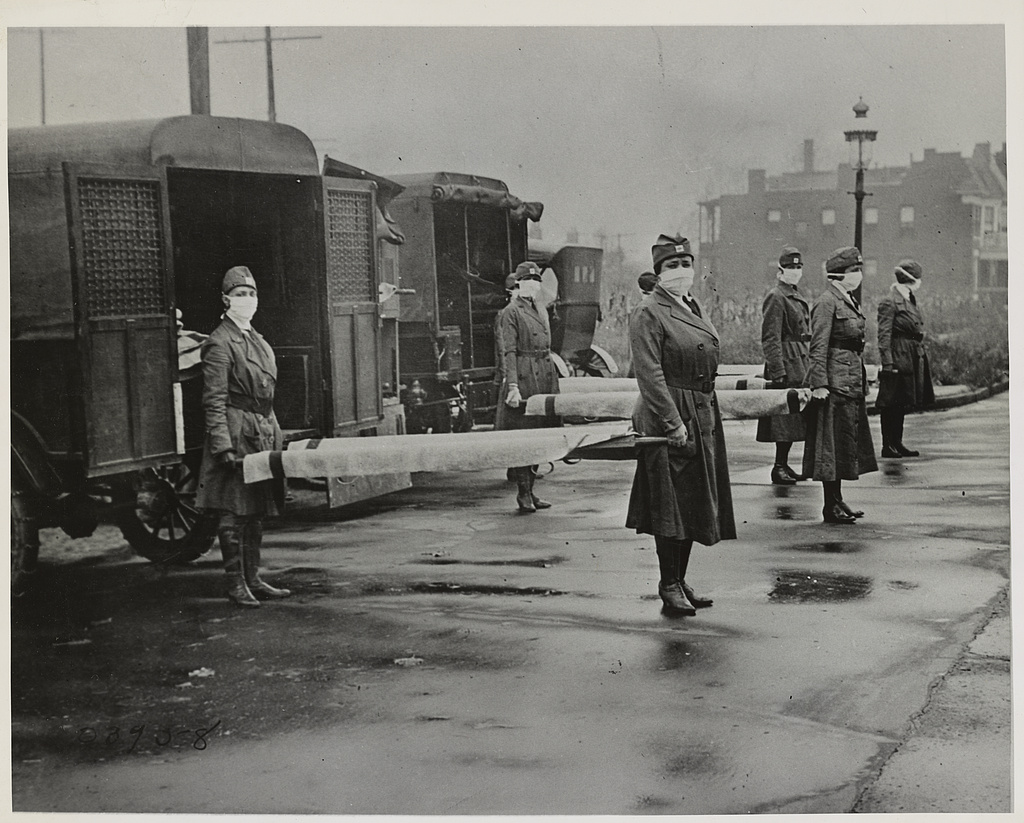
St. Louis Red Cross Motor Corps on duty Oct. 1918 Influenza epidemic.
Would you like to support Flashbak?
Please consider making a donation to our site. We don't want to rely on ads to bring you the best of visual culture. You can also support us by signing up to our Mailing List. And you can also follow us on Facebook, Instagram and Twitter. For great art and culture delivered to your door, visit our shop.

